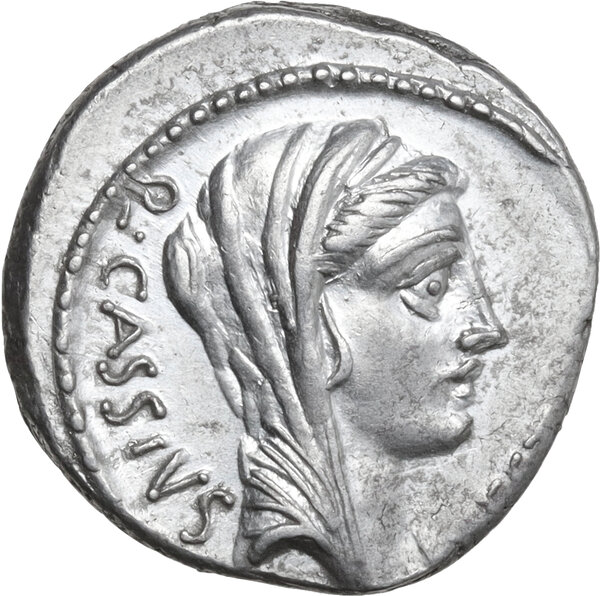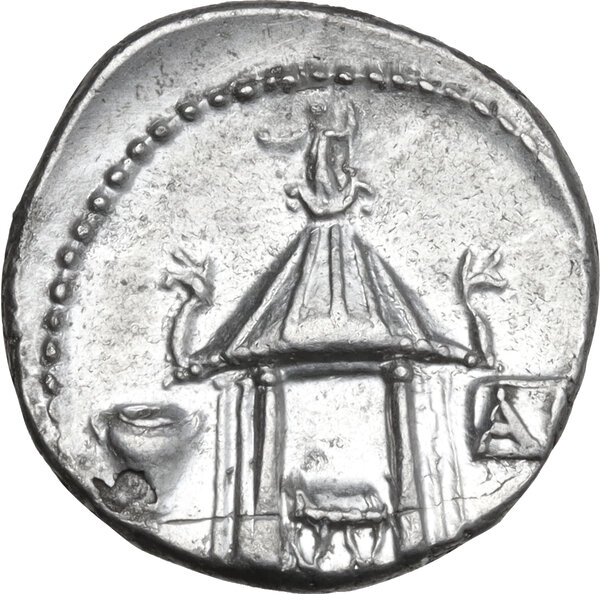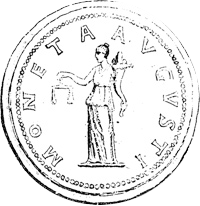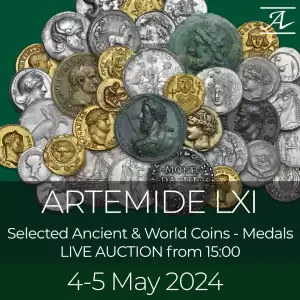Veiled Libertas


Q. Cassius Longinus. AR Denarius, Rome mint, 55 BC. Obv. Veiled head of Libertas right; on the right, [V]EST ; on the left, Q·CASSIVS. Rev. Temple of Vesta, within curule chair; on the left, urn; on the right, tablet inscribed AC (= Absolvo/Condemno). Cr. 428/1; B. 9 (Cassia); RRSC D 220.1. 4.06 g. 17.90 mm. Superb and full weight example. Minor metal flaw on reverse, otherwise. good EF/EF. The moneyer's ancestor, L. Cassius Longinus Ravilla, proposed a new method of jury voting, a form of 'secret ballot', in 137 BC. Known as the Lex Cassia Tabellaria, it provided that in most court cases tried by jury, jurors could mark their verdict on a small tablet and drop it into a basket to be counted by a court official. The exception was cases of treason, where a voice vote or show of hands was required. The practice also extended to voting on laws proposed in the Comitia Tributa and Concilium Plebis, the people's assemblies. Combined with the obverse, this reverse alludes to the Trial of the Vestal Virgins of 113 which set up the special commission, presided over by Ravilla, of two of the three delinquent Virgins - Licinia and Marcia (Aemilia was found guilty during the first trial in 115 BC).


